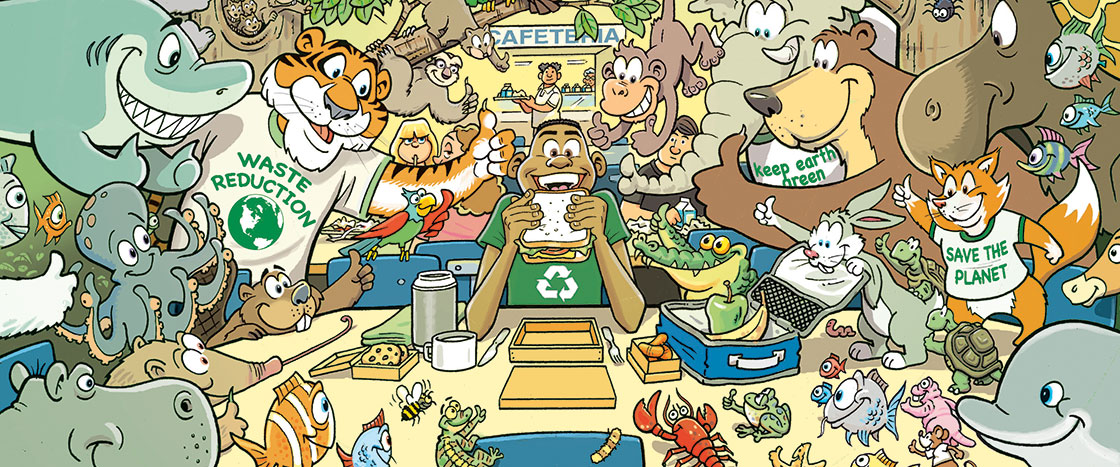Devon, 13, is ready for lunch. His stomach rumbles as he eagerly unwraps the meal he packed that morning: a turkey sandwich neatly tucked into a plastic bag, a shiny pouch of fruit juice, and a snack pack of crackers and chocolate spread.
But what Devon doesn’t know is that his delicious lunch has a dark side. When he’s done eating, left behind will be an empty plastic bag, a crushed juice pouch, and a sticky plastic cup.
That might not sound like much garbage, but it matters when you consider that Devon isn’t the only one leaving behind a trail of trash. Most of us throw away an assortment of plastic containers and food wrappers not just at lunchtime but throughout the day. In fact, Americans throw away about 15 million tons of plastic containers and packaging each year, according to the Environmental Protection Agency. And all that garbage is a problem—a big, sticky, messy problem—for our planet.


